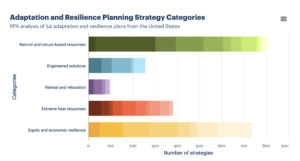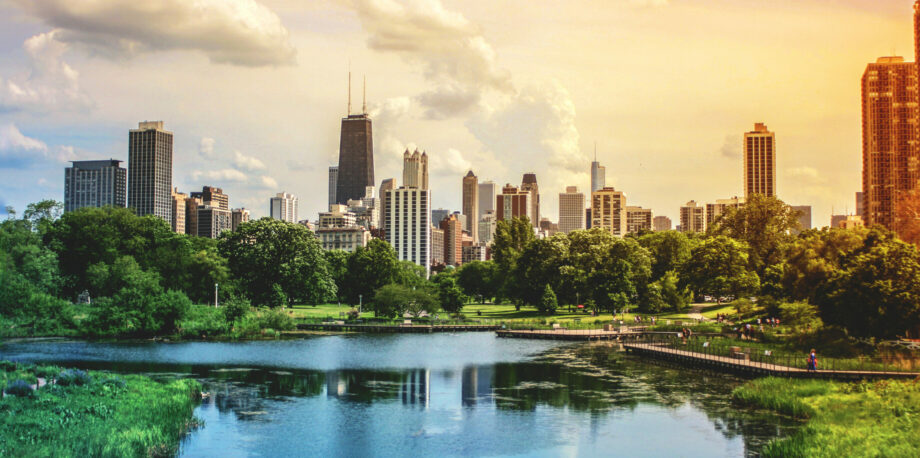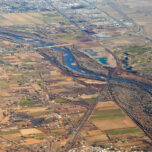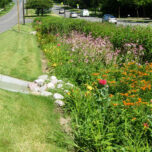August 20, 2024 — How can communities prepare for the adverse conditions that climate change is bringing our way? A recent report from the Regional Plan Association, a nonprofit research organization working to enhance quality of life in the New York City area, has taken a whack at answering that question. By analyzing 54 plans that communities around the U.S. have put into place for building resilience in the face of change and adapting to changes as they occur, the group aimed to find commonalities, call out exemplary approaches and present options for other communities in the process of developing their own plans. Their conclusion: A lot is going on, but a lot more needs to happen — and soon.
The analysis, summarized in The State of Climate Adaptation Planning Today, identified and categorized more than 2,000 specific strategies to adapt to new conditions and enhance resilience in the face of change between 2015 and 2023. These strategies fell into five broad groups: natural and nature-based responses, engineered solutions, retreat and relocation, extreme heat responses, and equity and economic resilience.

Graphic courtesy of the Regional Plan Association
Most common, with 808 examples, were strategies — such as protecting wetland and planting trees — that tapped nature’s capacity to alleviate stresses caused by climate change. Approaches in this category are particularly valuable because they often can address multiple risks, such as increased heat and more destructive precipitation, at the same time. Native American communities in particular used nature-based solutions, applying traditional knowledge.
Equity and economic resilience strategies were second-most prevalent, with 734 strategies falling into this category. Specific elements here including making sure those most affected are part of planning, using non-financial criteria to set priorities, and making sure everyone impacted is included in communications. The researchers noted that not only can promoting these conditions reduce the impact of climate change, but reducing the impact of climate change can enhance equity and economic resilience.
Alleviating risks associated with elevated heat was also high on the list, with 381 related strategies. However, the report notes that far more needs to be done, given that, in the U.S., heat is the single biggest cause of mortality associated with weather.
Engineered solutions — those relying on elements of the built environment, such as dams and coastal erosion barriers — accounted for 256 of the strategies examined. These tend to cost more than nature-based solutions and focus on a single issue. They also may be less flexible with changing needs.
Physically moving away from risks accounted for 96 of the strategies explored. This largely were driven by governments providing financial and/or regulatory input that discourage inhabitation of unsafe areas.
The report not only lists strategies, but also provides brief descriptions of specific plans as a way to provide guidance to communities facing similar challenges. Elements common across the plans examined included demographic information, risk/vulnerability assessments, summaries of past efforts, descriptions of community member involvement, priority and goal setting, action planning, and identifying possible funding sources. Additionally, the report noted that some plans included protecting the well-being of nonhuman elements of nature as well as humans.
Overarching recommendations include collaborating across geographic boundaries and “departmental silos,” engaging those affected in developing adaptation and resilience strategies, prioritizing equity, and advancing initiatives that offer multiple benefits.
The researchers note, importantly, that the survey is of plans and not of actual progress in carrying them out.
Related Posts
Ensia shares solutions-focused stories free of charge through our online magazine and partner media. That means audiences around the world have ready access to stories that can — and do — help them shape a better future. If you value our work, please show your support today.
Yes, I'll support Ensia!




